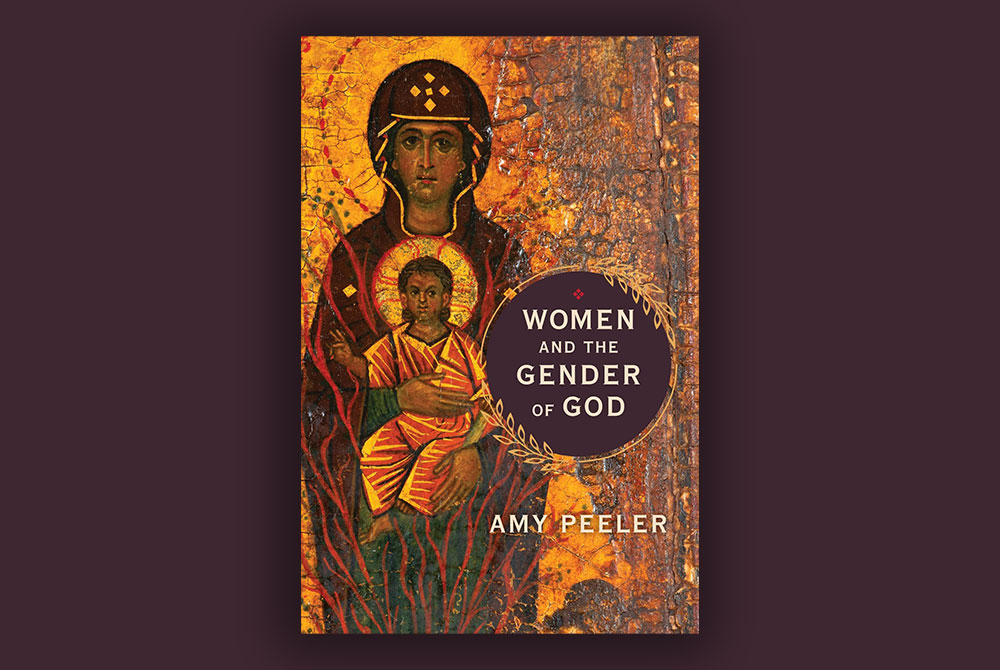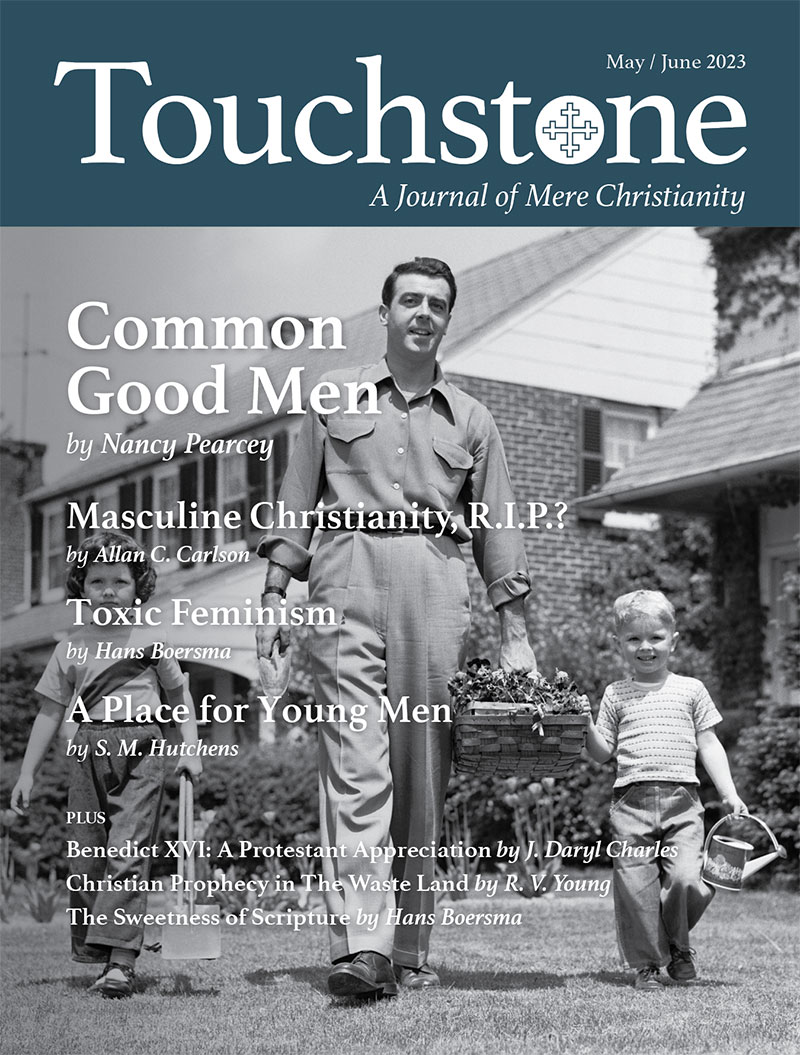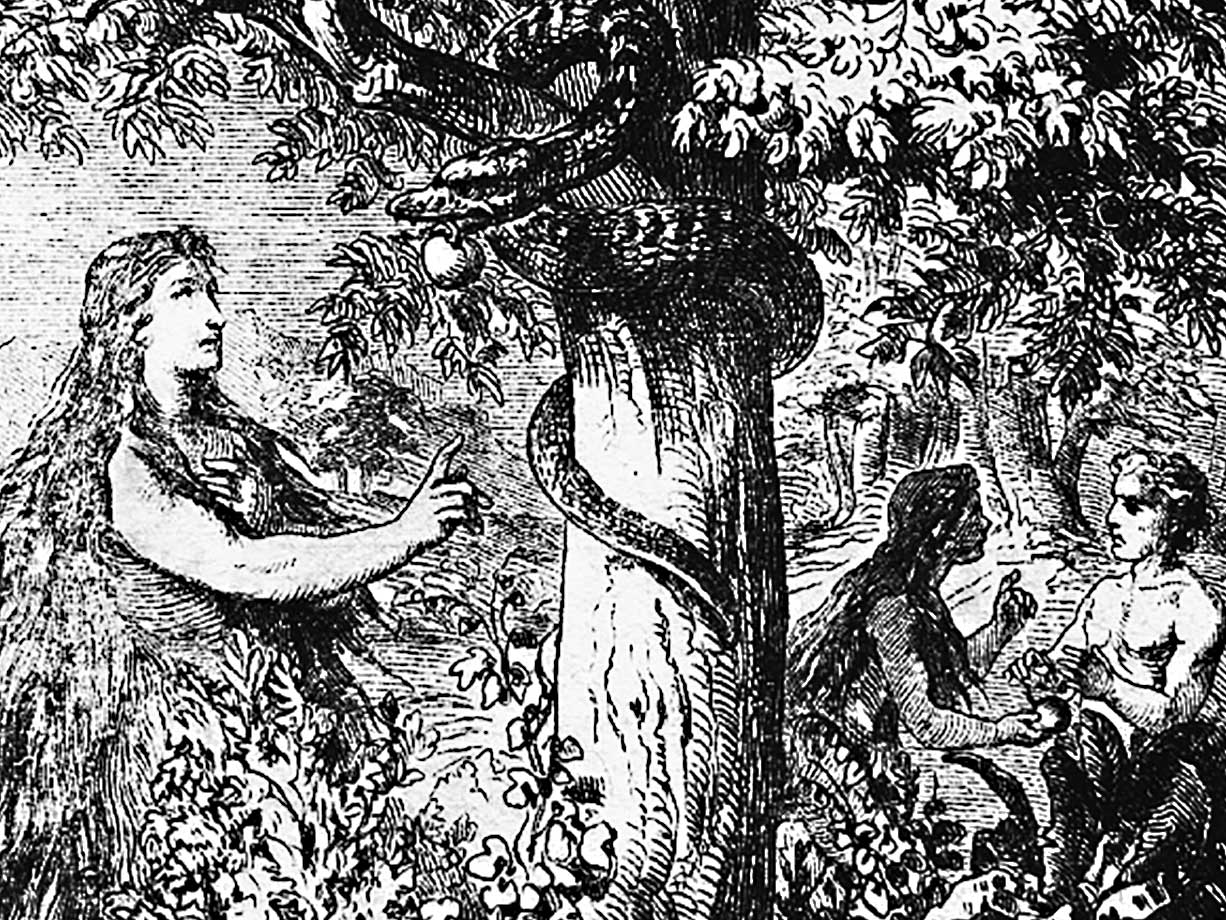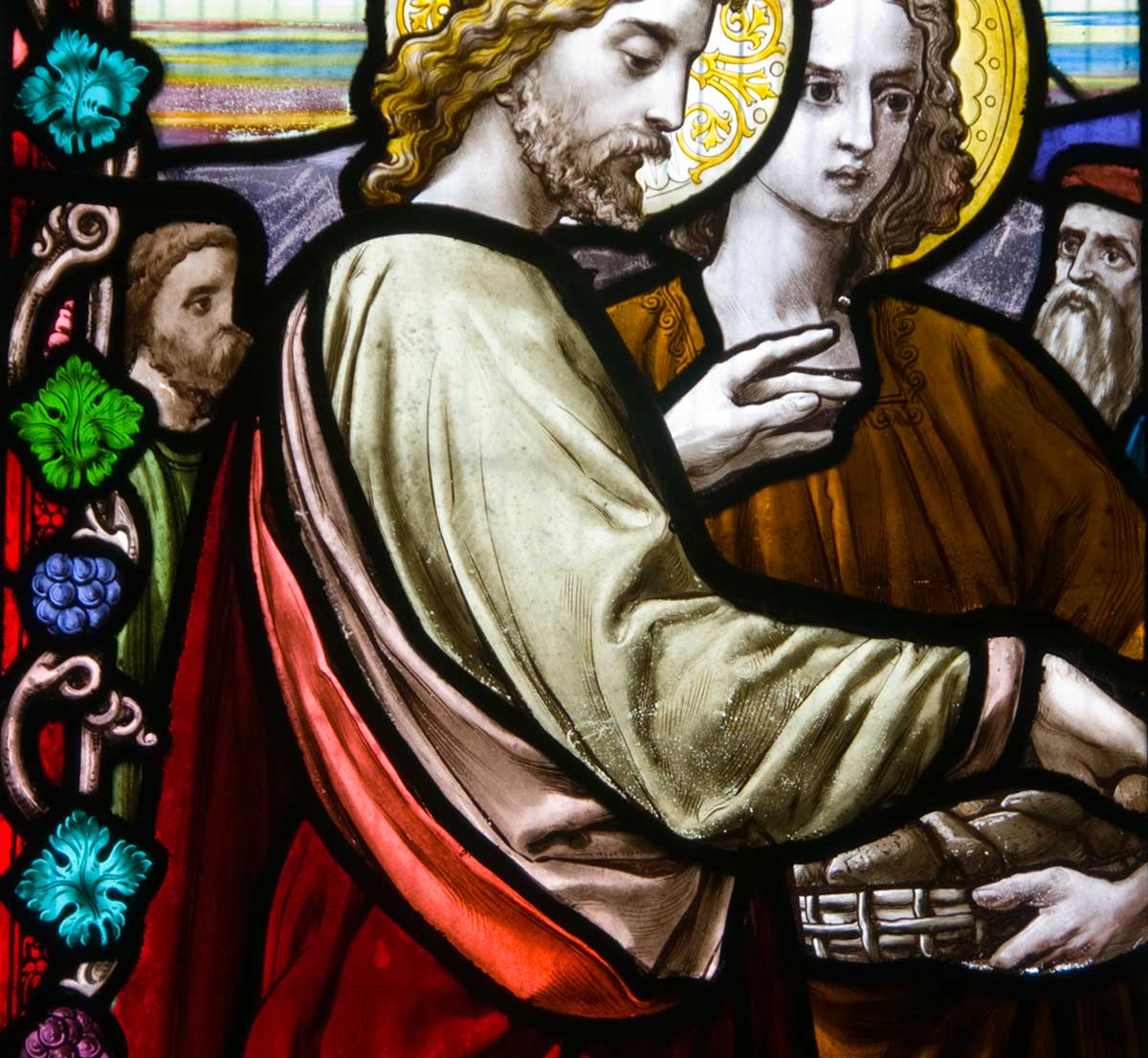Getting God Right?
Women and the Gender of God by Amy Peeler
Eerdmans, 2022
(286 pages, $24.99, paperback)
Christians roundly affirm that God values women—or so one might think. No, contends Amy Peeler, associate professor of New Testament at Wheaton College. The church’s chronic “failures against women proceed unabated, sometimes malicious and predatory, sometimes subconscious and unintended, practiced by both men and women, on each other and on themselves” (1). Therefore, she deems her conviction that God indeed does value women as an “audacious claim” (7).
The church’s failures are multicausal, notes Peeler, but essentially the problem “is that Christianity often gets God wrong” (2). Namely, misconceptions of divine paternity perpetuate the notion of an oppressive masculine deity that privileges males and disempowers females. So Peeler ventures to the doctrinal center of the faith—the Incarnation of Jesus Christ—to advance three affirmations she considers essential to getting God right: God the Father is not male; God’s actions toward the Virgin Mary provide the standard for God’s actions with all women; and God the Son is male like no other (4).
Getting Gender Right?
Peeler develops these affirmations by discussing sex, gender, and roles relative to both Mary and God (5). Theology proper and that chaotic contemporary pseudoscience called “gender studies” are, for Peeler, necessary companions (188). And because she enshrines this bond between gender and God in the very title of her book, one expects a working definition of gender, presumably up front. Tellingly, Peeler provides none—only a note of admiration for Judith Butler’s work on sex and gender (5n10).
Butler is an architect of third-wave feminism and queer theory intent on dislodging gender from biological sex. She views maleness and femaleness not as stable realities rooted in divine design and human nature, but as malleable fictions constructed and policed by institutional agendas. Any fixed relationship between biological sex and sexual identity, or any fixed meaning ascribed to sexed difference is thus about power, not truth. Sexual identity is not received but achieved, an issue not of creational intent but human enactment—performativity. Gender, therefore, becomes a shapeshifting socio-political plaything that defies meaningful definition. Like Butler and most modern feminists, Peeler does not seem to recognize inherent meaning in male and female bodies. This profoundly impacts her view of gender and prompts her to exchange the lush expanse of human teleology for the barren confines of so-called gender roles.
Getting the Father Right?
Peeler tirelessly insists that the First Person of the Trinity is not male, though with no opponents in view but a child at her son’s birthday party, who said, “God is a boy” (187). Such shadowboxing is bizarre, since the entire Christian tradition unequivocally agrees that sex pertains to creatures, not the uncreated Father. Peeler, however, has two applications in view, both of which hollow out historic Christianity.
First, Peeler notes that “language for God in both Scripture and tradition . . . tilts overwhelmingly toward the masculine” and that “God does exhibit both masculine and feminine characteristics”; nonetheless, she asserts that “masculine conceptions of God are deeply problematic” (112). The contradiction is blatant. In what sense is God masculine, or how does he exhibit this? Clarity and specificity are conspicuously absent. Yet here Peeler is unambiguous: God’s initiating action toward humans must not be perceived as masculine. Mary’s story poignantly displays how this would posit God “as an aggressive sexual human male” (106). Further, claims Peeler, nothing about divine agency in creation, redemption, or even God’s inner triune life requires distinctly paternal language for the Trinity’s First Person (102–103).
Second, Peeler states, “God is Father because God causes a pregnancy” (20, emphasis added). She could hardly be clearer that calling God “Father” is right and good. But she finds “no justification” for this in the Son being eternally begotten of the Father, only in “Jesus’s decision” to speak this way (114). Peeler explains, “If the eternal relationship was the motivation, Jesus should call God ‘Father,’ or ‘Mother,’ or ‘Parent’ even. It must be the incarnation that narrows the fitting choice for divine address. Jesus does not call God ‘Mother’ because he already has one” (115, emphasis original).
This should bring doctrinally astute Christians to a grinding halt. God is not Father because he causes a pregnancy unless the Son is Son of the Father only because of that pregnancy. The Father does not derive fatherhood from Mary’s motherhood, nor does Jesus call the Father “Father” because that happens to be his favorite moniker among apt alternatives. It is no nominalist trope to call Jesus the Son of the Father, but an ontological reality assuring us that who God reveals himself to be is who God has ever been in his eternal inner triune life. This is the heart of Nicene orthodoxy—the ground and grammar of the church’s trinitarian faith, and normative to our knowledge of the gospel and the gospel’s God.
Getting Mary Right?
Peeler believes she “has considered anew the story of Mary, calling attention to riches previously unearthed” (188). Making truly new contributions to the formidable Mariology of the church catholic is a bold claim, to put it gently. Still, Peeler says she does this by showing how Mary’s story demolishes negative feminine stereotypes and establishes that the God revealed in the Incarnation “does not favor males and does empower females” (151).
Peeler makes some beautiful and beneficial insights here. While toppling caricatures of one sort, however, she erects ideology-laden caricatures of another. She has something to teach about proper affirmation of female bodies and the glory of motherhood, yet by treating motherhood as incidental to femaleness she surrenders the teleology of female bodies and severs the inherent connection between the female and femininity. Peeler duly upholds female agency, yet by couching this in competitive power dynamics, her Mary flaunts “alpha” attributes that Peeler discredits for males. And Peeler rightly highlights Mary’s ministry but uses Mary’s intimate handling of Christ’s body to platform her as the church’s prototype for ordaining female priests.
Peeler’s Mary is tortured—magnificent Mother of God one moment and self-aggrandizing, me-focused modern the next. Of the latter iteration Peeler beams, “She calls attention to herself. From the beginning, the account has involved her: her story, her family, her body, and so she identifies herself as the focal point. Look at me” (77, emphasis original). Peeler hopes that all women will see themselves in her archetypal Mary, yet one doubts this is something that Mary herself could or would do.
Getting Jesus Right?
Jesus Christ is the ground on which this book stands or falls. For in Peeler’s own estimation, “the denial of any maleness or masculinity of God appears with no greater force than in the assertion that God the Father is revealed in the incarnate, virginally conceived Son” (151).
Here is Peeler’s claim: there is no maleness or masculinity in God the Father; but God the incarnate Son is male, yet in a manner devoid of the masculine, such that the non-masculine Jesus reveals with unrivaled force (whereas a masculine Jesus would forcefully contradict) the non-masculinity of God. Feel free to read that again; it is dizzying. And how can the male Jesus be the quintessential denial of any maleness or masculinity in God? Because, argues Peeler, the virgin-conceived Jesus received female-only flesh from Mary, rendering him uniquely male—male unlike all others.
By this logic one could argue that Eve received male-only flesh from Adam, rendering all humans the man-flesh of our primal parents. Of course, this argument is novel and absurd—and so is Peeler’s. She adds that Jesus being male from female-only flesh makes him an optimally inclusive Savior “for biological females, males, and all who find themselves in between” (137n74). Here Peeler’s special pleading leverages the hackneyed myth that “intersex” denotes persons in between the sexes, or somehow both sexes, rather than biologically based variations within maleness and femaleness (Abigail Favale, The Genesis of Gender, 2022, 125).
What is more, if the flesh Jesus received from Mary is hers alone, then the Incarnation benefits her alone. No, the flesh of Mary is the flesh of Abraham and Sarah, of Adam and Eve—the flesh of Israel and flesh that is human. And the Word became flesh to gather in himself the generations and their peoples, to fulfill Israel’s vocation and be the Savior of the world.
Peeler believes that “in the instance of Mary’s pregnancy, God does not replace the man, God removes the man” (29). What a howling void of biblical, gospel truth. The good news of great joy is that God the Father provides the man Christ Jesus, born of a woman. God the Son embraced the virgin womb of a biologically sexed female and issued from her a biologically sexed male, certifying the original goodness of creation’s male-female binary in the redemption of creation. This does not exalt the male at the expense of the female; it honors and dignifies them both and together. Male and female God made them in the beginning, and male and female God made them anew in Christ.
An Audacious Claim?
Peeler does little to distinguish the masculine from the toxic, playing on the tedious cultural commonplace that toxic masculinity is ubiquitous and incessant, advancing overtly or subconsciously always and everywhere. Systemic assertions of this sort possess an air of irrefutability. The mere existence of this book will thus elicit obligatory adulation from many, while the unenchanted will be dutifully dubbed perpetrators of a crime. Critical theories, feminist or otherwise, are predictable and stultifying in how they play out.
We cannot defend the indefensible when Christians act un-Christlike toward women. Thankfully, however, Peeler’s claim that God values women is not audacious—and we need not join her in deconstructing and reimaging God to agree. There were nearly twice as many women as men in the early church, and the church remains majority female in places as dissimilar as the Americas, Africa, and China. Why was and is the church especially attractive to women? Because God values women (Nancy Pearcey, Love Thy Body, 2018, 69–70).
The significance of Peeler’s book is not the book itself. It is one among many in that trendy, boutique genre of academic-types intent on recasting Christian doctrine to fit their own presumptuous and provincial agendas. This book commands attention because its author is a professor at a bellwether evangelical institution, testifying yet again to the internal confusion and collapse of evangelicalism that will require more to remedy than benign collegiality and convenient ignorance.
John C. Clark is professor of theology at Moody Bible Institute and the author, with Marcus Johnson, of The Incarnation of God (Crossway, 2015) and A Call to Christian Formation (Baker Academic, 2021).
Share this article with non-subscribers:
https://www.touchstonemag.com/archives/article.php?id=36-03-040-b&readcode=10933
subscription options
Order
Print/Online Subscription

Get six issues (one year) of Touchstone PLUS full online access including pdf downloads for only $39.95. That's only $3.34 per month!
Order
Online Only
Subscription

Get a one-year full-access subscription to the Touchstone online archives for only $19.95. That's only $1.66 per month!
bulk subscriptions
Order Touchstone subscriptions in bulk and save $10 per sub! Each subscription includes 6 issues of Touchstone plus full online access to touchstonemag.com—including archives, videos, and pdf downloads of recent issues for only $29.95 each! Great for churches or study groups.
Transactions will be processed on a secure server.
more on feminism from the online archives
more from the online archives

14.6—July/August 2001
The Transformed Relics of the Fall
on the Fulfillment of History in Christ by Patrick Henry Reardon
calling all readers
Please Donate
"There are magazines worth reading but few worth saving . . . Touchstone is just such a magazine."
—Alice von Hildebrand
"Here we do not concede one square millimeter of territory to falsehood, folly, contemporary sentimentality, or fashion. We speak the truth, and let God be our judge. . . . Touchstone is the one committedly Christian conservative journal."
—Anthony Esolen, Touchstone senior editor













